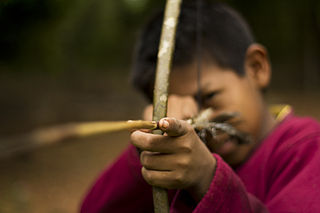
Guarani is a group of culturally-related indigenous peoples of South America. They are distinguished from the related Tupi by their use of the Guarani language. The traditional range of the Guarani people is in what is now Paraguay between the Paraná River and lower Paraguay River, the Misiones Province of Argentina, southern Brazil once as far east as Rio de Janeiro, and parts of Uruguay and Bolivia.
The Charrúa were an indigenous people or Indigenous Nation of the Southern Cone in present-day Uruguay and the adjacent areas in Argentina and Brazil. They were a semi-nomadic people who sustained themselves mainly through hunting and gathering. Since resources were not permanent in every region, they would constantly be on the move. Rain, drought, and other environmental factors determined their movement. For this reason they are often classified as seasonal nomads.

Argentina has a racially and ethnically diverse population. The territory of what today is Argentina was first inhabited by numerous indigenous peoples. The first white settlers came during the period of Spanish colonization, beginning in the 16th century. The Spaniards imported African slaves, who would go on to become the first Afro-Argentines. Following independence from Spain in the 19th century and well into the 20th century, numerous migration waves took place, with Argentina being the second most popular destination for migrants in the early 20th century, after the United States. Most of these migrants came from Europe.
Minuane were one of the native nations of Uruguay, Argentina and Brazil. Their territory was along the Paraná and Uruguay Rivers. In one source, they are fully identified with the Guenoas, being actually considered the same tribe.

As of 2017, South America has an estimated population of 418.76 million people.

The languages of South America can be divided into three broad groups:
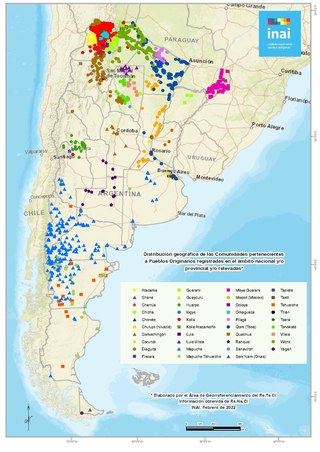
Argentina has 35 indigenous people groups officially recognized by the national government. As of the 2010 census [INDEC], some 955,032 Argentines self-identify as indigenous or first-generation descendants of indigenous peoples.

The Charruan languages are a language family once spoken in Uruguay and the Argentine province of Entre Ríos. In 2005, a semi-speaker of the Chaná language, Blas Wilfredo Omar Jaime, was found in Entre Ríos Province, Argentina.

Uruguayans are people identified with the country of Uruguay, through citizenship or descent. Uruguay is home to people of different ethnic origins. As a result, many Uruguayans do not equate their nationality with ethnicity, but with citizenship and their allegiance to Uruguay. Colloquially, primarily among other Spanish-speaking Latin American nations, Uruguayans are also referred to as "orientals [as in Easterners]".

María Micaela Guyunusa was a Minuán-Charrúa native from present day Uruguay of Güenoa descent.
Guenoa or Güenoa were one of the native nations of Entre Rios, Argentina, Uruguay and some parts of Brazil. They were related to the other tribes in the area like Charrua, Minuane, Yaro and Bohán.
Yaro were one of the native nations of Uruguay and Argentina. A minor tribe, they were closely related to the Charrúa people.

Chaná were one of the native nations of Argentina and Uruguay. Their native language is Chaná language.
The Bohán were one of the native nations of Uruguay. A minor tribe, they were related to and eventually subsumed by the Charrúa people. They were also related to the Yaro people.
Arachán were one of the native nations of Uruguay. Their origin is not very well-known, but some scholars consider them to be different from other local ethnicities. They were said to have come from the Inca Highlands thousands of years ago. Their name is composed of two elements: "eastern", "oriental" + "Canna", as they used to cultivate Cannaceae as staple food.
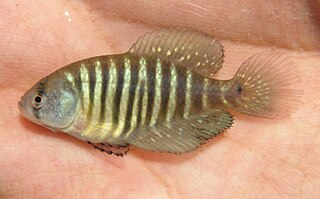
Austrolebias charrua is a species of killifish from the family Rivulidae. It is endemic to the basin of the Lagoa dos Patos in southern Brazil. This species was described in 2001 with the type locality given as a temporary pool near Chuí and Santa Vitória do Palmar in Rio Grande do Sul. The specific name refers to the Charrúa an indigenous people who lived in Rio Grande do Sul, as well as neighbouring parts of Argentina and Uruguay.
The Charruan playing cards were a deck of cards made of pieces of leather with paintings, probably created by Tacuabé. These are characterized by being a cultural loan from the Spanish deck to which distinct Charruan elements were added.

The Massacre of Salsipuedes was an organised campaign to eradicate the last remnants of the now extinct Charrúa people. It was executed by the Uruguayan Army under the command of Uruguayan president Fructuoso Rivera. The massacre took place in 1831 on the banks of the Salsipuedes Creek.
White Paraguayans or European Paraguayans are Paraguayan people whose ancestry lies within the continent of Europe, most notably Spain, Italy and Germany, and to a lesser extent, Ukraine and Poland.

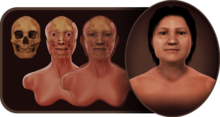

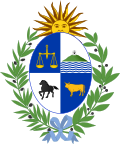
![A Guarani boy with an arrow or hu'y [gn], from Paraguay Guarani kid.jpg](http://upload.wikimedia.org/wikipedia/commons/thumb/e/e4/Guarani_kid.jpg/220px-Guarani_kid.jpg)











